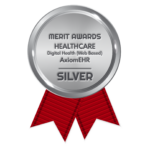How frequent and effective communication tools improve patient satisfaction.
“Communication is key” is a common phrase used in many areas of life, including relationships with partners, friends and colleagues. The phrase is just as applicable when talking about the relationship between physician and patient.
Technologies such as telehealth, mobile apps and remote patient monitoring devices have made the foundation for a stronger patient-provider relationship. More frequent communication and incorporating effective communication tools into patient encounters has shown to improve patient satisfaction rates, care delivery and health outcomes. Other benefits include:
- Patients disclosing more information
- Enhanced patient satisfaction
- Better rapport between patient and professional
- Patients feeling more involved in decision making
- More accurate diagnosis
- More realistic patient expectations
- Patients better adhering to treatment
- Patients seeking further care and
- Easier transition between sites and settings i.e., when a patient needs to start seeing a specialist.
Better communication is a win/win for both parties, but it’s not just about patient-to-provider satisfaction and engagement. Ineffective team communication is the root cause of approximately 66% of all medical errors. In addition, most malpractice claims arise from communication issues between the clinician and the patient. Better communication in integrated health care practices not only improves the experience for all involved, it also saves lives.
The first step in improving communication in your practice is understanding how patients prefer to communicate. The most important takeaway here is that mobile is the future of health care. According to Pew Research, 81% of American adults have a smartphone. In addition, there are over 318,000 mobile health apps available and over 60% of Americans have downloaded a mobile health app. Another Pew Research study found that more Americans used their smartphone for mobile health than any other activity.
Identifying where communication breakdowns happen.
Our last blog outlined the benefits of improving communication in integrated health care practices and understanding how patients prefer to communicate. The second step to improving communication within your practice is understanding where communication breakdowns happen.
Breakdowns are most likely to happen:
- During interdepartmental transfers/handoffs
- During transfers from primary to secondary care
- In high-acuity settings such as an emergency room
- During patient handovers at shift changes
- During information sharing across professional boundaries i.e., clinician to case manager
- Across multiple services sites
- And within the interface between EHR progress notes in primary and secondary care.
Ultimately, communication issues are most likely to arise when information changes hands or when patients need to start seeing a new physician. Understanding this can help health care practitioners narrow their focus to address where breakdowns are happening. Technology and proper data entry are key to solving clinic communication issues.
A mobile-friendly EHR that is accessible from any device can improve communication throughout the practice. AI-enabled functionality allows providers to dictate changes to notes and plans and have that data automatically entered to the correct place with no keyboard needed. Intelligent alerts can make follow-up for tasks easy and intuitive. And communication amongst the entire team can drastically improve with real-time messaging.





